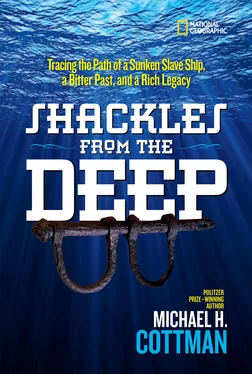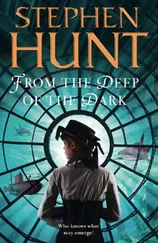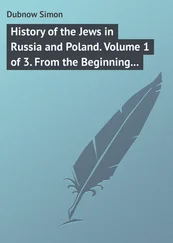Michael Cottman - Shackles From the Deep - Tracing the Path of a Sunken Slave Ship, a Bitter Past, and a Rich Legacy
Здесь есть возможность читать онлайн «Michael Cottman - Shackles From the Deep - Tracing the Path of a Sunken Slave Ship, a Bitter Past, and a Rich Legacy» — ознакомительный отрывок электронной книги совершенно бесплатно, а после прочтения отрывка купить полную версию. В некоторых случаях можно слушать аудио, скачать через торрент в формате fb2 и присутствует краткое содержание. Жанр: unrecognised, на английском языке. Описание произведения, (предисловие) а так же отзывы посетителей доступны на портале библиотеки ЛибКат.
- Название:Shackles From the Deep: Tracing the Path of a Sunken Slave Ship, a Bitter Past, and a Rich Legacy
- Автор:
- Жанр:
- Год:неизвестен
- ISBN:нет данных
- Рейтинг книги:4 / 5. Голосов: 1
-
Избранное:Добавить в избранное
- Отзывы:
-
Ваша оценка:
- 80
- 1
- 2
- 3
- 4
- 5
Shackles From the Deep: Tracing the Path of a Sunken Slave Ship, a Bitter Past, and a Rich Legacy: краткое содержание, описание и аннотация
Предлагаем к чтению аннотацию, описание, краткое содержание или предисловие (зависит от того, что написал сам автор книги «Shackles From the Deep: Tracing the Path of a Sunken Slave Ship, a Bitter Past, and a Rich Legacy»). Если вы не нашли необходимую информацию о книге — напишите в комментариях, мы постараемся отыскать её.
Shackles From the Deep: Tracing the Path of a Sunken Slave Ship, a Bitter Past, and a Rich Legacy — читать онлайн ознакомительный отрывок
Ниже представлен текст книги, разбитый по страницам. Система сохранения места последней прочитанной страницы, позволяет с удобством читать онлайн бесплатно книгу «Shackles From the Deep: Tracing the Path of a Sunken Slave Ship, a Bitter Past, and a Rich Legacy», без необходимости каждый раз заново искать на чём Вы остановились. Поставьте закладку, и сможете в любой момент перейти на страницу, на которой закончили чтение.
Интервал:
Закладка:
He gently picked up a large chunk of the iron and, with a sickening feeling, realized what he was holding in his seawater-wrinkled hands: a pair of hardened, ancient shackles—heavy manacles that he knew were designed specifically to handcuff the wrists of enslaved Africans, wrists that—he couldn’t help thinking—had probably looked much like his own.
Moe’s mind was racing with questions. Why were these shackles on this site? How did they get there? How long had they been there? He thought it unlikely that they would be from the Nuestra Señora de Atocha , which made him wonder, Where did these come from?
The discovery of the shackles made this shipwreck site different from all the other shipwrecks Moe had explored. He plunged his hands into the sand and began unearthing more shackles, several pairs at a time.
Each pair of shackles weighed six pounds and had two holes the size of quarters to hold a 13-inch-long bolt that locked into place to bind someone’s wrists tightly and efficiently. They were unyielding and they were sure to cause extreme discomfort and pain.
To give you an idea of how amazing it was that Moe even discovered this tiny mound of lost relics, you have to imagine how it must have been. A whole ocean stretches beneath you as, weightless, you peer hard through murky water and swirling sand, searching for a pinpoint of something slightly out of place—all against a backdrop of an ever shifting seafloor.
As he reached down into the sand again, Moe tugged at another pair of shackles from the pile, but these shackles were different from the others: They were tiny, thin, and almost flimsy, and they fit in the palm of Moe’s hand. He knew that these particular cuffs were designed specifically for the small wrists of children.
Suddenly Moe felt overwhelmed. Who would make handcuffs for children? And what kind of person would use these grisly tools? Where did these shackles come from and how many people had worn them?
Not all treasure is about glitter. Sometimes, along the route to discovery, we find something that is more valuable than precious stones. Sometimes we learn something about our human story and ourselves.
Moe’s discovery in and of itself was extraordinary—but it was even more so because of this: 300 years after those shackles were used to bind African people aboard a sweltering slave ship, the first man to touch those same shackles was Moe, a free black man.
While Moe and the crew began to survey the site in the Marquesas known as the New Ground Reef, they unearthed another artifact: an iron cannon weighing about 800 pounds. Moe was pretty sure he had stumbled upon the remains of a sunken slave ship. He surfaced with the shackles and went to work trying to make sense of what he’d found.
WHO WOULD MAKE HANDCUFFS FOR CHILDREN? AND WHAT KIND OF PERSON WOULD USE THESE GRISLY TOOLS?

It didn’t take long before divers, treasure salvagers, and marine archaeologists were all talking about this mysterious shipwreck without a name. It wasn’t the Nuestra Señora , which Moe would go on to find in 1985. Moe had come across what came to be known only as the “English Wreck.”
The artifacts from the English Wreck were unloaded from the Virgalona and stored in a laboratory in Key West, Florida. Ten years passed, and it seemed the relics with such mystery and importance might be forgotten and lost to time once again.
CHAPTER 3


The future emerges from the past. ∼ Senegalese proverb
WHAT IS
KNOWN AS
THEtransatlantic slave trade began in 1441, according to historians, when two Portuguese ships sailed the coast of West Africa. They were looking for gold and other goods in Africa. But they discovered that slavery, the buying and selling of people, could be profitable as well. They knew there was a demand for workers to harvest plantations in the Caribbean and to serve as laborers in Europe and South America.
What began as trading for a few African people ultimately evolved into the centuries-long global kidnapping and exploitation of the West African civilization by European nations, including Portugal, Spain, England, France, and the Netherlands. By the start of the 16th century, according to some historians, tens of thousands of African people had been transported to Europe and islands in the Atlantic Ocean. They were chained inside jam-packed slave ships and would never see Africa—their homeland—again.
The seed of fear was sowed into the fabric of the once vibrant West African villages, generations of African families were torn apart, and life for African men, women, and children would never be the same.
I didn’t know it at the time, but present-day marine archaeologist David Moore was studying the slave trade and had gotten wind of the English Wreck. Because so many shackles were found underwater in a single location, David suspected, like Moe, that New Ground Reef might be the site of a shipwreck that had been part of the 17th-century transatlantic slave trade.
Ten years had passed since Moe Molinar had discovered the shackles from the English Wreck. David was surprised that no one had yet examined the shackles. They felt it was an injustice to let those relics be forgotten and fade away like something swept beneath the carpet of time and history.
He took on a mission to learn everything he could about the English Wreck. He was beginning an amazing journey, and little did I know that I would soon be part of it. David and I believed that to understand our past—the people, cultures, and rationale for slavery—is to also understand ourselves. And so, in some ways, to David archaeology is also about the future and learning from our mistakes.
But David needed more information—a name, a date, a timeline—anything solid that could help him trace the origin of this shipwreck.
For that, David would need to strap on his wet suit and do a little underwater detective work.

BY THE START OF THE 16TH CENTURY, ACCORDING TO SOME HISTORIANS, TENS OF THOUSANDS OF AFRICAN PEOPLE HAD BEEN TRANSPORTED TO EUROPE AND ISLANDS IN THE ATLANTIC OCEAN.
CHAPTER 4
Wisdom does not come overnight. ∼ Somali proverb
LATE ONE
AFTERNOONin July 1983, David Moore was aboard the Trident , peeling off his sea-worn wet suit.
For days, David had worked with other divers to survey strategic sections underwater looking for one important yet elusive piece of evidence: the ship’s bronze sailing bell. He assumed that like most ships there would be a bell that would bear the name of the vessel—a vital clue that would help them unravel the mystery of this shadowy shipwreck. They needed this piece to start to put together the puzzle and confirm their theories about the ship’s origins.
David was tired and a bit anxious. But then, as he emerged from the water, he heard one of his crewmates yell: “Hey, you’re not going to believe this. I think we found something big!”
Читать дальшеИнтервал:
Закладка:
Похожие книги на «Shackles From the Deep: Tracing the Path of a Sunken Slave Ship, a Bitter Past, and a Rich Legacy»
Представляем Вашему вниманию похожие книги на «Shackles From the Deep: Tracing the Path of a Sunken Slave Ship, a Bitter Past, and a Rich Legacy» списком для выбора. Мы отобрали схожую по названию и смыслу литературу в надежде предоставить читателям больше вариантов отыскать новые, интересные, ещё непрочитанные произведения.
Обсуждение, отзывы о книге «Shackles From the Deep: Tracing the Path of a Sunken Slave Ship, a Bitter Past, and a Rich Legacy» и просто собственные мнения читателей. Оставьте ваши комментарии, напишите, что Вы думаете о произведении, его смысле или главных героях. Укажите что конкретно понравилось, а что нет, и почему Вы так считаете.












